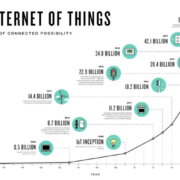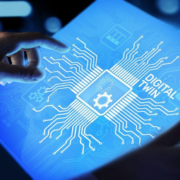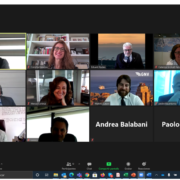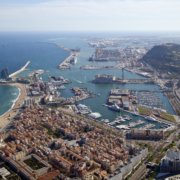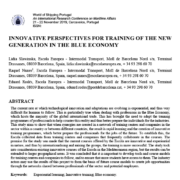IoT impact on Port Operations
The IoT (Internet of Things,) known as the ability to connect devices and objects through a digital network, is a term that has ceased to be new and has slowly become part of our daily routine. Nowadays devices connected to the IoT permeate our homes, with people relying on devices such as Roomba, smart refrigerators or Alexa. IoT’s capabilities are much more powerful and each of the sectors of our economies have taken advantage of the benefits of this technology operations and management.
When looking at the maritime industry, and ports in particular, we can see that the advantages of incorporating IoT into their operations for the interaction of M2M (machine to machine) in telematic devices and sensors has resulted in a positive impact. Shipping has recognised that the best strategy for the future is no longer to prioritise massive physical growth but rather to optimise flows and logistics processes. Given this need, the IoT provides the ability to manipulate, control and monitor actions – an important step (albeit not the only one) within the grander scheme of things.
Initially we saw the IoT utilised to optimise the mobilisation of containers in terminals, monitoring of the control of working hours and accesses, towards the activation of equipment, control of cranes or prediction of maintenance. All this could be summarised not only in information reports but also in future opportunities. Knowing the data is always beneficial but knowing what to do with it is much better and this is the real gain from the process. To correctly identify where the processes can be optimised is the most difficult job of the sensor data collection. To date no universal algorithm or formula exists, and each terminal, each product and each country has a different dynamic that must be evaluated and readapted to involve the complex analysis of experts who actually manage to identify the weak sections of the processes.
On the other hand, the IoT is common practice of digital ports even if this does not mean that everything is done digitally. Monitoring, control and data collection have become daily routines, but the prediction of many activities is the new leading characteristic that the IoT is taking. It entails predicting supply chain breaks, equipment failures and many other aspects that are associated with artificial intelligence.
The cons?
What are the downsides? The main concern is that such implementations may expose the ports and organisations relying on digital data collection to unauthorised external interventions or cyberattacks. Nevertheless, large companies have understood that it is part of the risks to be mitigated, and that without these strategies sooner rather than later companies that do not adopt them will lose competitiveness.
The future?
Information is becoming more and more valuable. At the same time, it is becoming more public and freely accessible. The IoT interconnects equipment to obtain information; this information then collaborates between companies to obtain benefits. The scope of the IoT has managed to expand to all those who indirectly interact with logistics or port activities. We have left behind the information gap that in the past was termed the “Maritime Adventure”, and today exporters need to have constant control of situations to optimise the supply chain.
From a direct link to the truck driver through an app interconnected with the port community system, to the most detailed environmental control system, the IoT has infinite contributions in the port activity. It can be customised to the needs of each actor and promises to have event higher levels of performance with the emergence of 5G (in the not-to-near future).
“According to IDC (International Data Corporation), there are already nearly 200 billion computerised devices, with 20 billion of them wired and communicating via the Internet, and more than 50 billion sensors that track” around the world. The maritime sector, as the majority holder of international transport, has the responsibility to act efficiently and safely to reduce costs in a globalised market. This requires the optimisation of each of the shipping processes, and that in any case the IoT is a tool that allows to promote these objectives.
With the world constantly becoming “smaller”, and speed and accuracy becoming more important to customers and operators, there is hardly any doubt that the Internet of Things is the language of the future – and it is up to us to knows this language and to learn to decipher the information collected by it to improve the door-to-door supply chain, and the operations in the ports in particular.
For more information, check out these articles:
- https://blog.orbcomm.com/el-iot-proporciona-datos-inteligentes-para-los-puertos-y-las-terminales-digitales-del-futuro/
- https://www.porttechnology.org/news/internet_of_things_and_the_container_port/
- https://www2.deloitte.com/nl/nl/pages/publieke-sector/articles/iot-and-5g-potentialities-in-ports-and-terminals.html
Written by:
- Vanessa Bexiga, Escola Europea – Intermodal Transport

